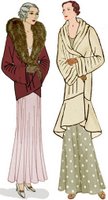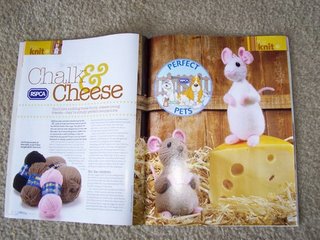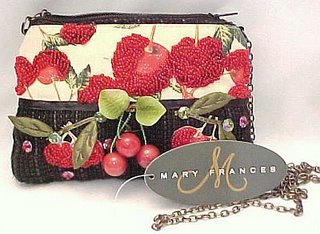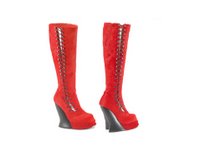Permanent Fashion and Textile History GalleryThe Fashion and Textile History Gallery features changing selections from the Museum’s permanent collections, which are comprised of more than 50,000 garments and accessories dating from the 18th century to the present - with particular strength in contemporary designer fashion - some 30,000 textiles from the 6th to 21st centuries, as well as 300,000 textile swatches and 1,300 sample books. The Fashion and Textile History Gallery is organized chronologically, so that students and visitors can understand the important cultural, social, and technological changes that fashion so clearly demonstrates. In this and other respects, the gallery supplements the many classes and tours held in the Museum as well as its special exhibitions and public programs. The Museum at FIT is one of the world’s only institutions dedicated to the study of fashion and textiles and will now feature its collections year-round.
Textiles from the Garden of EdenFebruary 17 to April 22, 2006Textiles from the Garden of Eden features approximately 65 textiles with images of flowers and plants. Flowers may be identifiable, abstracted, stylized, familiar, exotic, or fanciful, while plants may recall tropical jungles or dense forests, sometimes in combination with birds or animals. Flowers and plants are among the most enduring and popular designs found on textiles, perhaps because humankind has often dreamed of an earthly paradise or Garden of Eden. This exhibition is organized by Lynn Felsher, curator of textiles at The Museum at FIT.
Modern Master: Lucien Lelong Couturier 1918-1948
February 28 to April 15, 2006Lucien Lelong (1889-1958) was the last in a long line of couturiers who were masters of every aspect of haute couture. Unlike today's couturiers who are primarily fashion designers, Lelong combined a keen business sense with a refined eye for modern design. He hand-picked designers such as Pierre Balmain, Christian Dior and Hubert de Givenchy and developed their talents in order to realize his vision of the fashionable woman.
For nearly thirty years, the house of Lucien Lelong epitomized Parisian elegance, with a clientele at the crossroads of international high society and the arts. Lelong's beautiful second wife, Natalie Paley -- an exiled Russian princess turned fashion model and Hollywood actress -- typified the ideal Lelong client. Others included "Baba" de Faucigny-Lucinge, the Duchess of Windsor and Marlene Dietrich.
While master-minding the design and presentation of his collections, Lelong expanded his business in innovative ways and took a leading role in his profession. In 1934 he introduced Lucien Lelong Éditions, the first couture ready-to-wear line. His fashion empire included a perfume division, Parfums Lelong, which exists to this day. As President of the Chambre Syndicale de la Haute Couture Parisienne during the German Occupation, Lelong was most responsible for preventing the relocation of the haute couture to Berlin, saving the jobs of thousands of skilled workers.
This exhibition is the first to examine the multi-faceted career of Lucien Lelong. Examples of Lelong sportswear, daywear and evening attire, drawn from The Museum at FIT and private collections, and archival material from the Gladys Marcus Library's Special Collections will illustrate Lucien Lelong's significant contribution to the history of fashion.
For more information, consult the
website.






































